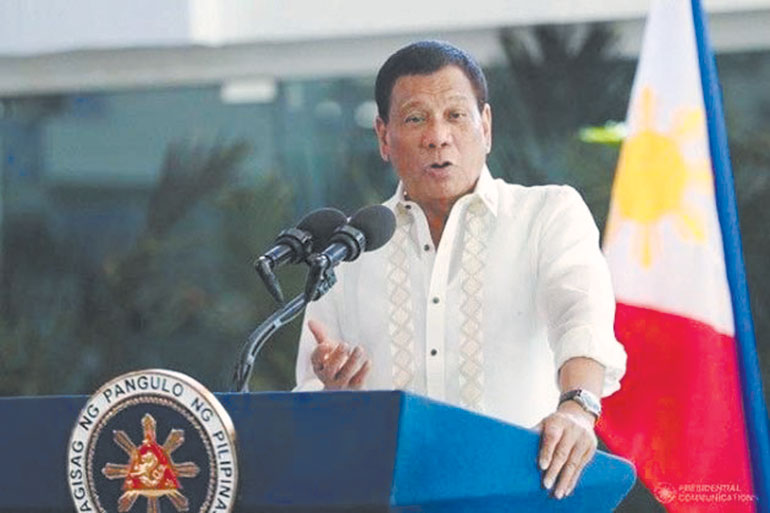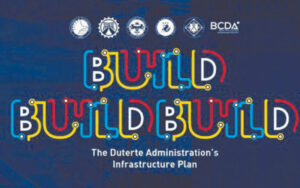The legacy of President Duterte

“No leader, however strong, can succeed at anything of national importance or significance unless he has the support and cooperation of the people he is tasked to lead and sworn to serve.”
These were among the first words of Philippines’ 16th President, Rodrigo Roa Duterte, when he took office on June 30, 2016 and addressed the public at the Rizal Ceremonial Hall in Malacañan Palace, Manila.
It was a bold premise to build a presidency on, especially one backdropped by much controversy. Regardless, President Duterte’s administration continued to remain popular with the Filipino public, with even the latest Social Weather Stations survey finding that 75% of adult Filipinos are satisfied with his performance.
Such trust was not unfounded. Vilified as his administration was in certain groups, the Duterte government had managed to leave an impact on the country in various aspects and lead it through the worst global pandemic the world has seen in a century.
For one, President Duterte began the Comprehensive Tax Reform Program, designed to accelerate poverty reduction and to sustainably address inequality by making the tax system simpler, fairer, while also providing more efficient, additional — and a more sustainable stream of — revenues for the government.
The tax reform included the Tax Reform for Acceleration and Inclusion Law (TRAIN Law), which corrected inequities in the tax system by reducing income taxes for 99% of income taxpayers, and the Corporate Recovery and Tax Incentives for Enterprises (Create) Act, which aimed to provide private enterprises, particularly micro, small, and medium enterprises, more than P1 trillion worth of tax relief over the next 10 years.
It was also under Mr. Duterte that the Bangsamoro Organic Law was signed into law, creating the Bangsamoro Autonomous Region in Muslim Mindanao, finally ending the decades-long peace negotiations between rebel groups in Mindanao.
Other significant legislations approved under the Duterte administration include the Bureau of Fire Protection (BFP) Modernization Act, Anti-Terrorism Law, Sin Tax Law, Tax Amnesty Law, the 105-Day Expanded Maternity Leave Law, as well as the Mental Health Law. Programs like the One-Stop Service Center for OFWs, Overseas Filipino Bank (OF Bank) and OFW Hospital, OFW e-Card, salary increase for cops and soldiers, government workers’ pay hike and Balik-probinsya were also implemented.
Among the most easily recognizable of the Duterte administration’s accomplishments are the implementation of the 10-year passport and five-year driver’s license validity, as well as the rehabilitation of Boracay, Manila Bay, and Marawi.

The Build, Build, Build infrastructure development program, the centerpiece of the Duterte administration, was created to push the country into a “Golden Age of Infrastructure.”
Transportation Secretary Arthur Tugade said in a recent event, “Since 2016, the Department of Transportation has completed a total of 212 airport projects and working on 102 more. This 2021, we are set to inaugurate various completed airport projects in Clark, Catarman, Butuan, Busuanga, Zamboanga, Siquijor, General Santos, and Bicol.”
“Across the archipelago, we have also completed a total of 446 seaport projects, while 117 more are ongoing. New railways are also being built and existing rail lines are getting much-needed upgrades. In fact, this month, we will finally inaugurate the LRT-2 East Extension, and before the year ends, the massive rehabilitation of the MRT-3 and the Common Station will be completed. To date, we have a total of 1,090 kilometers of railway length with ongoing project implementation. To decongest EDSA, we have established the EDSA Busway, and built Bike Lanes to promote active transport,” Mr. Tugade added.
These, alongside the government’s economic recovery efforts during the pandemic, have helped the Philippines earn and maintain high credit ratings, despite the wave of downgrades globally. The Palace said that such ratings have allowed the government to quickly access emergency financing with concessional terms for its COVID-19 response.
Leading through crisis
Many have criticized the lack of quick, proactive action by the government in response to the COVID-19 pandemic. Nevertheless, the Duterte administration has managed to implement the COVID-19 Biosurveillance Program, the establishment of COVID-19 PCR laboratories in 64% of all provinces in the country, and the increase in testing capacity from an average of 30,000 to 40,000 tests each day in 2020 to an average of 75,000 to 80,000 tests every day in 2021.
It was also reported that a total of P635,810,000 worth of COVID-19 sickness services — involving severe or critical and mild or moderate cases — were provided by the government, consistent with the Universal Healthcare Law that the President signed in 2019.
On the national vaccination program against COVID-19, a total of 107,277,506 doses have been administered since March 1, 2021 until Dec. 28, 2021. As of the end of 2021, the number of fully vaccinated individuals was at 48,647,158, while 1,614,505 individuals have received booster doses.
“’Malasakit; Tunay na Pagbabago; Tinud-anay (real) nga Kausaban (change)’ — these are words which catapulted me to the Presidency. These slogans were conceptualized not for the sole purpose of securing the votes of the electorate. ‘Tinud-anay nga kabag-uhan (real change). Mao kana ang tumong sa atong pang-gobyerno (this is the direction of our government)’,” President Duterte continued in his inaugural speech.
“Far from that, these were battle cries articulated by me in behalf of the people hungry for genuine and meaningful change. But the change, if it is to be permanent and significant, must start with us and in us,” he added. — Bjorn Biel M. Beltran



